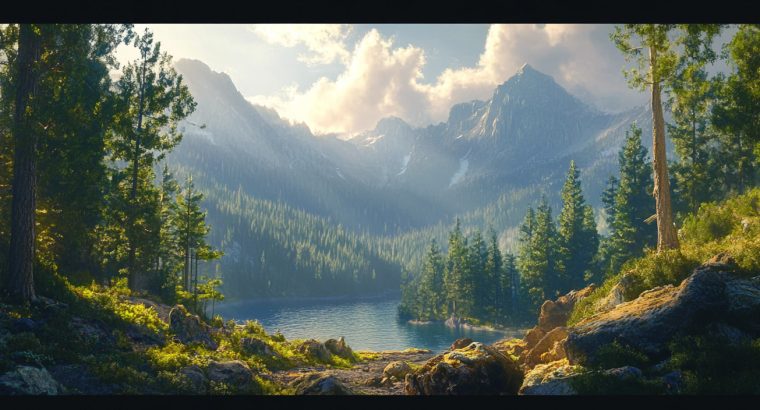Crater Lake National Park – 크레이터 레이크 국립공원
Crater Lake National Park – 크레이터 레이크 국립공원: A Comprehensive Guide
Crater Lake National Park, known in Korean as 크레이터 레이크 국립공원, is a mesmerizing natural wonder located in southern Oregon, USA. Known for its stunning beauty and deep-blue color, Crater Lake offers visitors an unforgettable experience filled with breathtaking views, diverse wildlife, and various recreational activities. This article provides a comprehensive guide to Crater Lake National Park, delving into its history, geology, attractions, and essential travel tips.
The Geological Marvel of Crater Lake
Crater Lake is renowned for being the deepest lake in the United States and the ninth deepest in the world, with a depth of 1,949 feet (594 meters). It was formed around 7,700 years ago following the collapse of the volcano Mount Mazama. This collapsed caldera gradually filled with rainwater and melted snow, resulting in the pristine lake we see today.
The lake’s exceptional clarity and vivid blue color are due to its depth and purity, with no rivers flowing into or out of it, meaning minimal sediment and pollutant discharge affect its waters. These unique characteristics make it a focal point of scientific study and a remarkable sight for all who visit.
The Rich History of Crater Lake
Before it became a national park, the area surrounding Crater Lake was inhabited by the indigenous Klamath people. They have lived in the region for thousands of years and treasured the lake, weaving it into their myths and cultural traditions. According to Klamath legends, the lake was the sacred battle site between the Chief of the Below World and the Chief of the Above World.
Crater Lake received federal protection when it was designated a national park on May 22, 1902, making it the fifth-oldest national park in the United States. The decision marked a turning point in preserving America’s natural wonders and paved the way for future conservation efforts.
Attractions and Activities at Crater Lake National Park
1. Rim Drive:
One of the most popular activities for visiting Crater Lake is driving the Rim Drive, a 33-mile (53 km) road that circles the caldera. This scenic drive offers stunning viewpoints and numerous photo opportunities of the lake and its surrounding landscapes. Key stops include the Sinnott Memorial Overlook, Watchman Overlook, and the Phantom Ship Overlook.
2. Hiking Trails:
Crater Lake National Park boasts an array of hiking trails catering to all skill levels. Some notable hikes include:
- Cleetwood Cove Trail: This is the only trail that leads down to the lake’s edge, allowing visitors to swim or take a boat tour to Wizard Island.
- Garfield Peak Trail: This moderately challenging trail offers panoramic views of the lake and surrounding areas.
- Mount Scott Trail: The highest point in the park, this trail provides a bird’s-eye view of Crater Lake and the Cascade Range on a clear day.
3. Boat Tours:
Boat tours on Crater Lake offer a unique perspective of the park, allowing visitors to explore Wizard Island and learn about the lake’s geology and history. These tours operate seasonally from late June through early September.
4. Winter Activities:
Crater Lake transforms into a winter wonderland from November to May, perfect for snowshoers, cross-country skiers, and winter hikers. Rangers often lead guided snowshoe walks, offering educational insights into the area’s winter ecology.
Wildlife and Flora
Crater Lake National Park is home to a variety of wildlife, including black bears, elk, mule deer, and a wide array of bird species, such as bald eagles and peregrine falcons. The park’s diverse ecosystems, ranging from dense forests to rocky peaks, provide habitat for this rich biodiversity.
The park’s flora is equally impressive, with old-growth forests of ponderosa pine, mountain hemlock, and whitebark pine stitching the landscape together. Wildflower enthusiasts will find the park particularly enchanting in summer, when vibrant blooms add splashes of color to the terrain.
Visiting Crater Lake National Park
Best Time to Visit
While Crater Lake is open year-round, the best time to visit depends on personal preference and desired activities. July through September is ideal for complete road accessibility, open trails, and favorable weather. However, those interested in winter sports will find the snow-covered months equally appealing.
Accommodations
Visitors to Crater Lake National Park can stay within the park or in nearby towns such as Medford, Roseburg, or Klamath Falls. Available accommodations include:
- Crater Lake Lodge: This historic lodge offers stunning views of the lake and serves as the only in-park hotel open seasonally from late May through mid-October.
- The Cabins at Mazama Village: Also operated seasonally, these rustic cabins provide basic amenities and easy access to the park’s south entrance.
Camping enthusiasts will find plenty of options, with several campgrounds available for tents and RVs during the summer season.
Park Entrance Fees and Regulations
As of October 2023, the entrance fee for Crater Lake National Park is $30 per private vehicle, valid for seven consecutive days. The fee for motorcycles is $25, and individuals on foot or bicycle can enter for $15.
Park regulations are designed to preserve its natural beauty and ensure visitor safety. Guests are advised to adhere to all posted guidelines, including wildlife safety measures, trail markings, and leave-no-trace principles.
Conclusion
Crater Lake National Park, with its striking deep-blue water, captivating geological formations, and vast array of activities, beckons adventurers from around the world. Whether you’re exploring the scenic Rim Drive, delving into the park’s trails, or stargazing beneath its unpolluted skies, Crater Lake’s splendor is sure to leave a lasting impression.
Visiting 크레이터 레이크 국립공원 offers a rare opportunity to connect with nature in one of the most beautiful settings on Earth. Prepare for a magical journey that will deepen your appreciation for the natural world and inspire future adventures.

